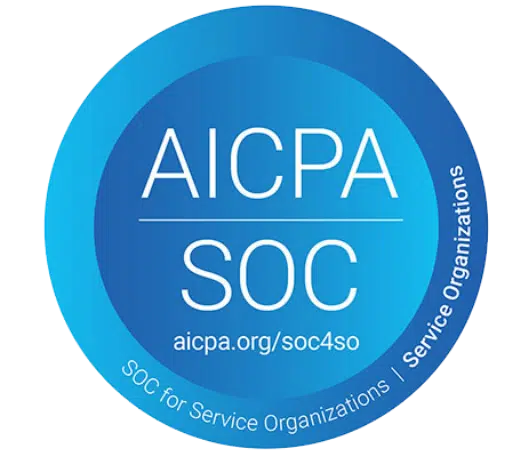What is ISMS Awareness Training?
Information Security Management System (ISMS) awareness training teaches individuals the importance of protecting sensitive information and maintaining strong cybersecurity practices. This training helps employees understand potential security risks, their roles in safeguarding data, and how to recognize and respond to common cyber threats. The goal of ISMS awareness training is to create a culture of security awareness, where everyone understands their responsibility in maintaining a secure environment and can make informed decisions to prevent security breaches.
Information Security Management System awareness training is crucial to maintaining an organization’s strong and effective cybersecurity posture. The program aims to educate all employees, contractors, and stakeholders about the importance of information security, their roles and responsibilities in safeguarding sensitive data, and the potential risks associated with cybersecurity breaches. This training helps create a culture of security awareness throughout the organization, enabling individuals to make informed decisions and take appropriate actions to mitigate security risks.

What is an ISMS?
An ISMS is a systematic approach to managing sensitive information securely, ensuring confidentiality, integrity, and availability. It encompasses people, processes, and technology to establish a framework for identifying, assessing, and managing information security risks. ISMS awareness training questions provide participants with a foundational understanding of the ISMS framework, its objectives, and its role in protecting the organization’s valuable information assets.
Key Elements of an ISMS Awareness Training Progam
Risk Awareness: Participants learn to identify and assess potential security risks that could compromise information confidentiality, integrity, or availability. Through an ISMS awareness questionnaire, they understand how to spot phishing attempts, malware, social engineering, and other common cyber threats.
Roles and Responsibilities: Different roles within the organization have varying responsibilities for information security. ISMS training clarifies these roles, helping participants understand how their actions contribute to the organization’s security posture.
Data Protection Regulations: ISMS training includes information about relevant data protection regulations, such as GDPR, HIPAA, or industry-specific compliance requirements. This ensures that participants know legal obligations regarding data handling and privacy.
Security Policies and Procedures: Participants are educated about the organization’s security policies and procedures, including password policies, access controls, incident response plans, and more. They learn how to adhere to these policies to prevent security breaches.
Safe Use of Technology: The training emphasizes safe practices, such as secure browsing, avoiding public Wi-Fi for sensitive tasks, and using approved tools for communication and file sharing.
Social Engineering Awareness: Employees are educated about social engineering tactics that attackers use to manipulate individuals into revealing confidential information or performing actions that compromise security. This awareness helps individuals remain vigilant and avoid falling victim to such tactics.
Secure Communication: Training covers secure communication methods, such as encrypted emails and secure messaging platforms, to prevent unauthorized access to sensitive information during transmission.
Start Getting Value With
Centraleyes for Free
See for yourself how the Centraleyes platform exceeds anything an old GRC
system does and eliminates the need for manual processes and spreadsheets
to give you immediate value and run a full risk assessment in less than 30 days
Which Standard Requires ISMS Awareness Training?
ISO 27001 is one of the most well-known standards explicitly specifying and requires ISO awareness training. The requirement for ISMS awareness training can be found in Clause A.7.2.2 of ISO 27001:2013. This clause is part of the “Information Security Awareness, Education, and Training” control domain, and it states:
“Awareness shall be raised among all employees about the policy for information security, their responsibilities, and the implications of not conforming to the information security policies and procedures.”
While ISO 27001 is a prominent standard that directly addresses ISMS awareness training, other standards may not explicitly mention ISMS but emphasize the importance of security awareness and training for personnel. These standards include but are not limited to:
- NIST Special Publication 800-53: This standard outlines security and privacy controls for federal information systems and organizations. While it doesn’t explicitly mention ISMS awareness training, it emphasizes the need for security awareness and training programs for individuals involved in information systems’ use, management, and operation.
- PCI DSS (Payment Card Industry Data Security Standard): Requirement 12.6 of PCI DSS requires organizations to implement a formal security awareness program to educate personnel about the importance of cardholder data security.
- FISMA (Federal Information Security Management Act): FISMA requires federal agencies and their contractors to provide security awareness training for personnel involved in managing, operating, and using federal information systems.
- CIS Critical Security Controls: Control 17 of the CIS Controls specifically addresses security awareness and training, emphasizing the importance of keeping staff informed about current threats and vulnerabilities.
While these standards may not explicitly use the term “ISMS awareness training,” they mandate security awareness and training programs to educate personnel about their responsibilities, policies, and procedures related to information security. These programs are critical in fostering a security-conscious organizational culture and mitigating security risks.
Start Getting Value With
Centraleyes for Free
See for yourself how the Centraleyes platform exceeds anything an old GRC
system does and eliminates the need for manual processes and spreadsheets
to give you immediate value and run a full risk assessment in less than 30 days





